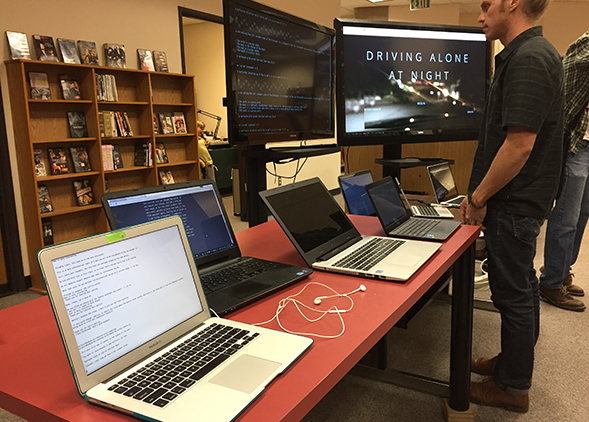Showcase Features Best Examples of Digital Work at SDSU
Student and faculty research from multiple disciplines will be on display in the Library Media Center.

The Digital Humanities Spring Showcase brings together students and faculty from multiple disciplines to present their digital and nontraditional scholarship. Participants are from the departments of history, theatre, English and comparative literature, classics, European Studies, journalism and media studies, electrical engineering and the Language and Acquisition Resource Center (LARC).
Area of excellence
Digital Humanities and Global Diversity is one of seven designated areas of excellence at SDSU with a goal to generate research about the digital shift with a specific focus on diversity—research that includes historiographical study of the past, critical theorization of the present, and creative vision for the future.Faculty members working to expand digital humanities at SDSU include Jessica Pressman, Adam Hammond and Nathian Rodriguez.
“We are encouraging faculty and students to think creatively about the tools we use every day,” said Pamella Lach, digital humanities librarian, who curated the spring showcase. “We want to draw attention to how much information is collected digitally and what is done with it; how algorithms created for one purpose can be used for another; and how all these things affect life chances across societal divides.”
Working across disciplines
Lach said the work of rhetoric and writing studies major Dalton Salvo is an example of how digital humanities can encompass multiple disciplines. Using visual representation, navigation and interactivity, Salvo created a virtual environment for experiencing his rhetorical research.SDSU journalism professor Noah Arceneaux’s class also experimented with the digital. In his media studies capstone class, 10 groups of students brainstormed ideas for a media innovation, application or service. The groups created websites to pitch their ideas and outlined the revenue potential.
Salvo’s work and samples of the work from Arceneaux’s class will be displayed at the spring showcase. The showcase will also feature the winner of SDSU’s second annual digital literature competition. Last year’s winner, Riley Wilson, used the open source storytelling tool Twine to create her entry, “Driving Alone at Night.”



